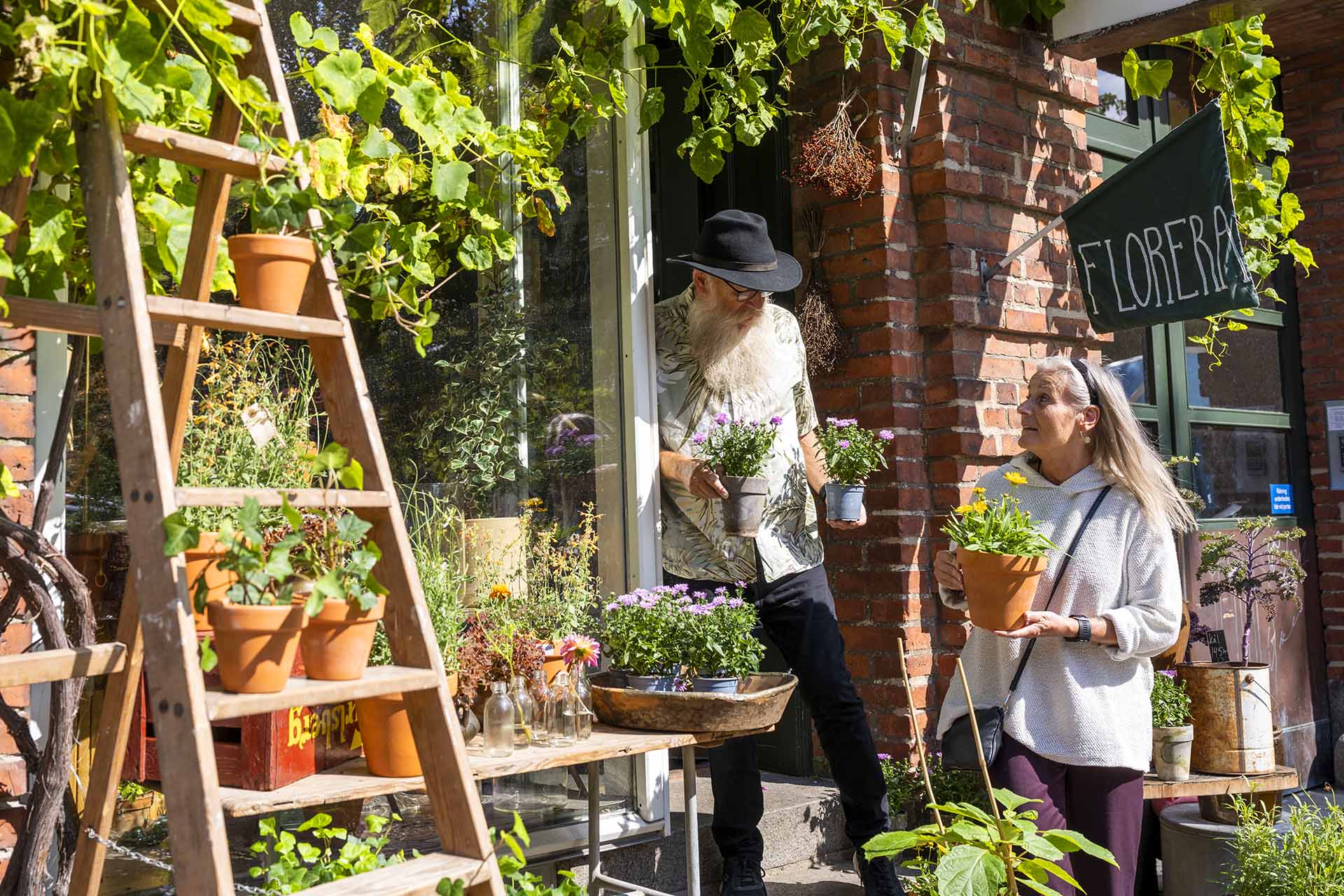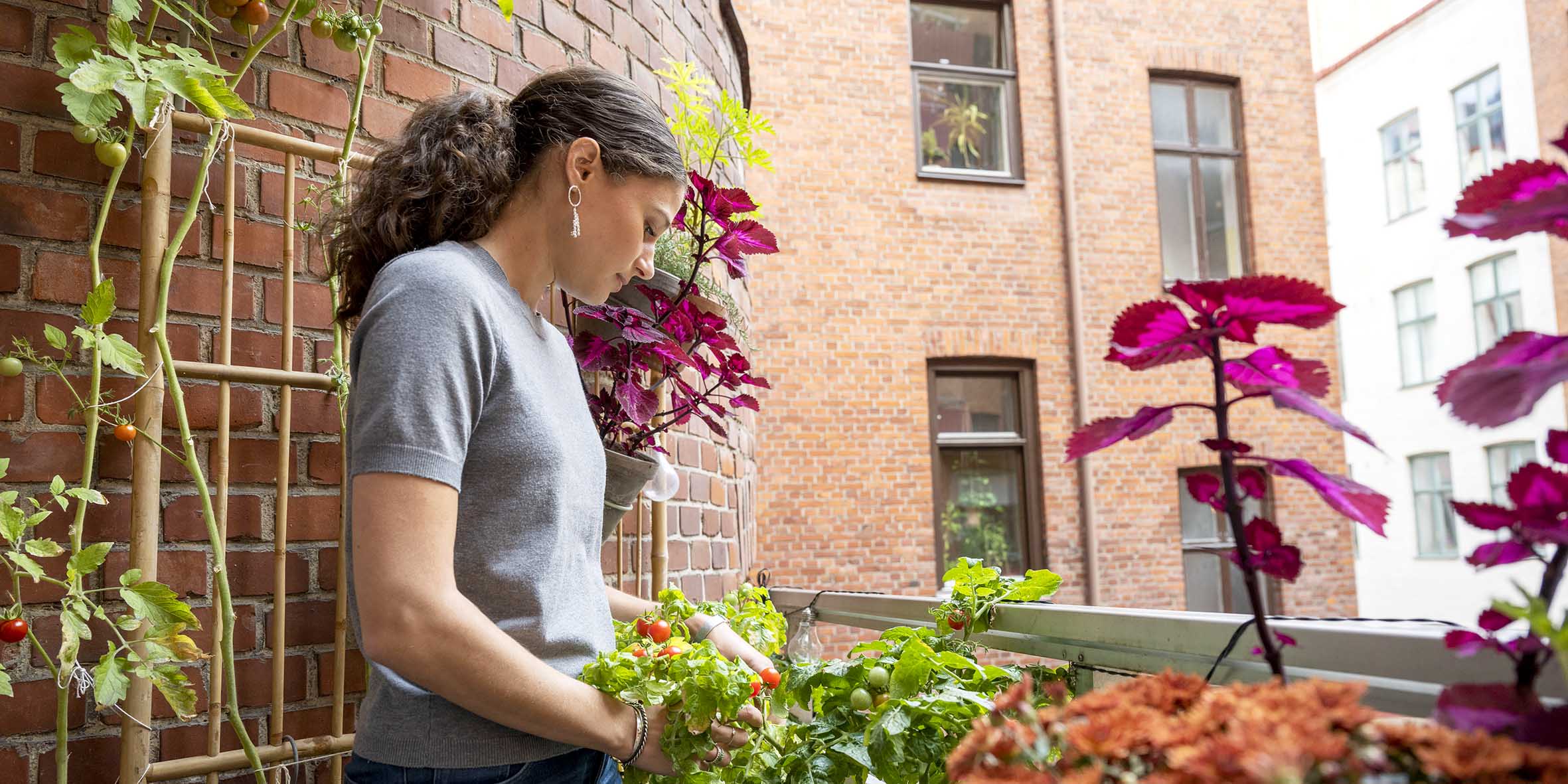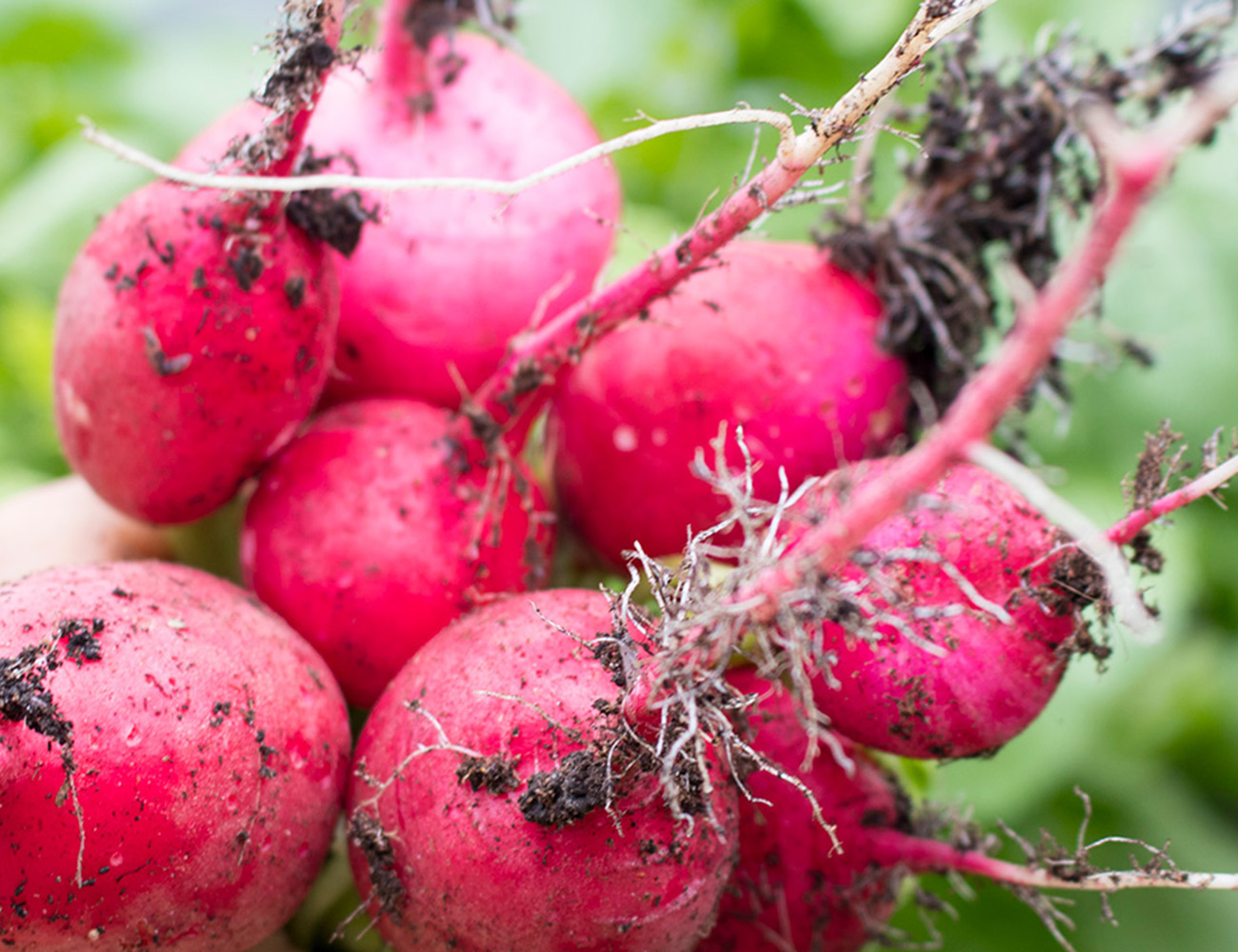The temperatures are warming up and the trees and plants are beginning to come back to life. Now is the time to prepare for a flamboyant summer balcony! There are a variety of seeds that are well suited to sow in March/April. Different kinds of lettuce, spinach, carrots, cabbage and green onions are some examples.
– Among the ornamental plants, pansies can be planted early in the year since they tolerate frost very well. They bring some colour to the balcony, and as they are edible they can be used in salads, says Anna Troberg, gardener at Plantagen.
She also suggests sunflowers, sweet peas and different kinds of poppies.
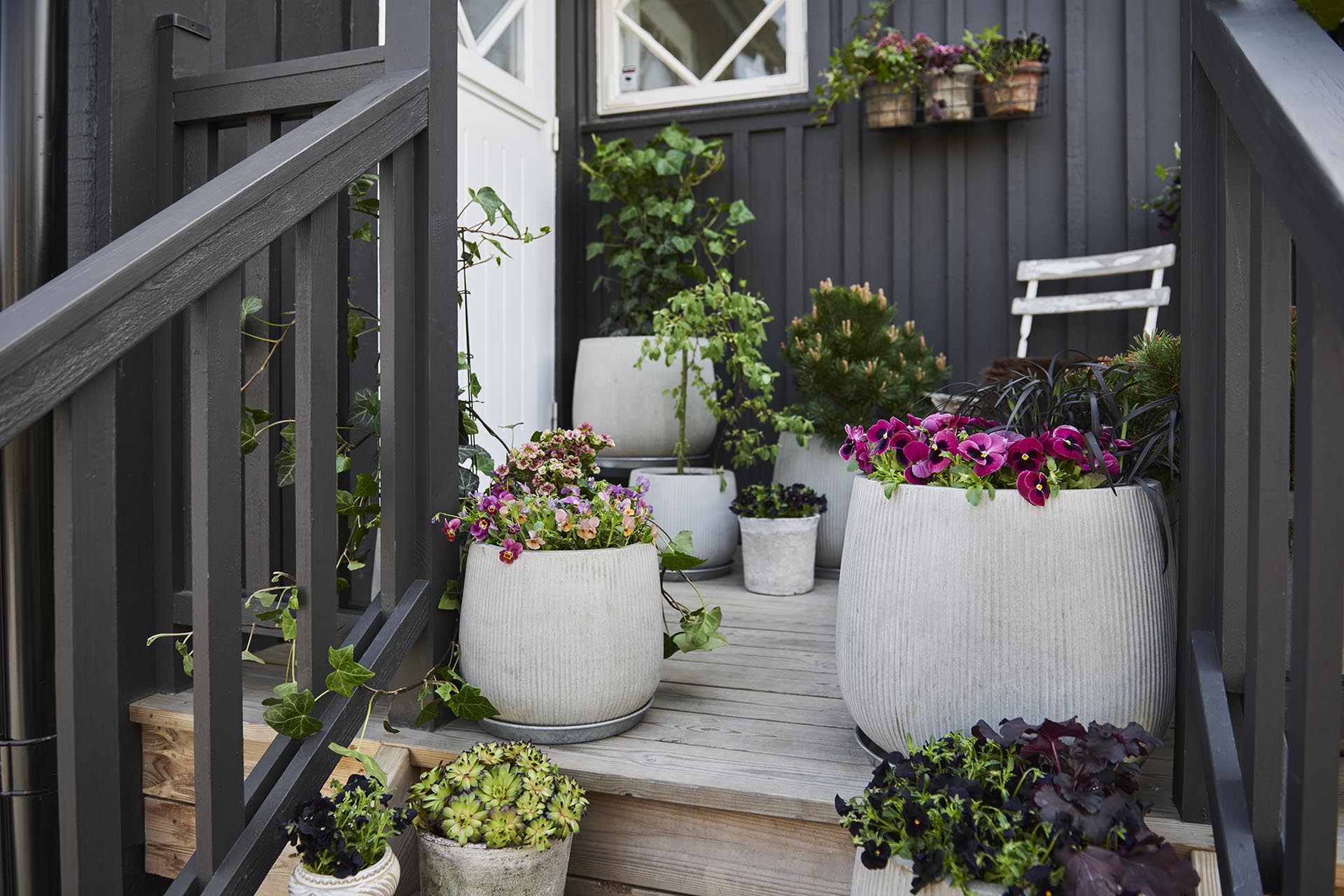
Image: Plantagen
This is how you succeed with balcony gardening
Do you want to grow leeks, peppers, tomatoes, chilies, celery or ornamental plants such as petunias and dahlias? They can all thrive on your balcony, but they require a longer growing season and should be pre-cultivated indoors for harvest in the summer.
Most things can grow on the balcony, even shrubs and trees.
– A lot has happened in this market in the last five to ten years. Today there are berry bushes and small fruit trees that can be grown in larger pots or pallet collars.
There are also a lot of practical tools for successful cultivation on the balcony. For example, washers that fit under pallet collars and trellis that are easy to attach and remove as needed, says Anna Troberg.
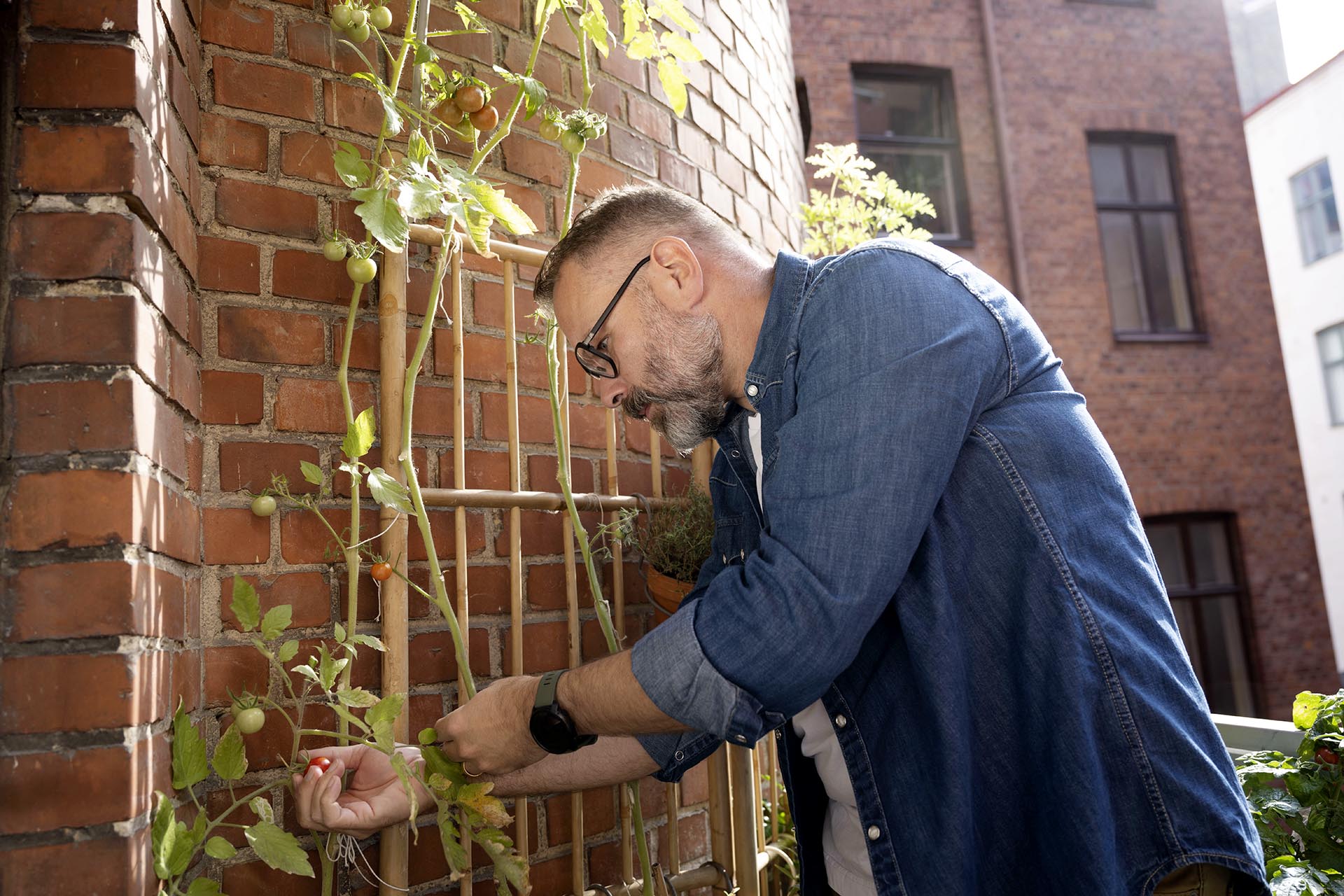
Anna’s best tips for successful balcony gardening
Choose the right soil!
It all starts with the soil. Choose a quality soil that has been properly fertilised, has a lot of micro-life and retains moisture. A balcony is often windier than other places, which dries up the soil, so a soil that retains moisture better is very useful on hot summer days.
Mix several plants in one larger pot
Don’t put the plants too close to each other and avoid drought with a bigger pot. Mix different plants. There are many plants that grow well together, saving space and enhancing your balcony.
A nice combination is a compact, about 90 cm high, plant of broad bean together with palm cabbage, for example the ‘Nero di Toscana’ which gets delicious, curly and dark green-black leaves. Add a red-leafed pickle salad, like ‘Red salat bowl’. This combination is very nice.
Don’t be afraid to experiment when you mix. Your own experience is worth its weight in gold! I like to mix ornamental plants with edible pants. Marigold, borage, poppy, and cress are welcome in my vegetable garden while oregano and thyme thrive in my perennial flower beds, delighting bees, butterflies and humans. Aromatic herbs are also a good way to keep lice out, for example.
Maximise the surface
When you have limited space, it may be wise to plan your garden a little extra and try to grow things at different heights. Drought-resistant spices such as thyme and rosemary can be grown in smaller pots that can be attached to a trellis or reinforced mesh on a wall. For the balcony railing, there are smart pots that you hang over the railing on both sides and that are well suited for plants that don’t require a lot of soil, such as strawberries, wild strawberries, chives or lettuce.
Sun or shade
When choosing which edible crops you want to grow on the balcony, you should keep in mind where the balcony is located. If it’s in the shade, it is smart to choose plants that don’t like to dry up, such as lettuce, spinach, chard, leaf and celery. Several types of cabbage such as kale, pak choi and other Asian leafy plants are also perfect where there is a little shade.
Chives, sorrels, carrots, beets and other root vegetables can also handle shade, although not the entire time. Delicious lettuce varieties in different colours create contrasts that work well in the shade. Sunny locations are suitable for chili, peppers, tomatoes, cucumbers, onions, peas and beans.
Try bokashi!
A bokashi compost is a great tool that you can use whether you live in a flat or a house. There is always food waste and when you grow things on a balcony you also get a lot of plant waste that is easy to put in a compost. Bokashi is a quick fermentation process in small odourless vessels, and you get the world’s best nutrition out of it while you also make your own soil.
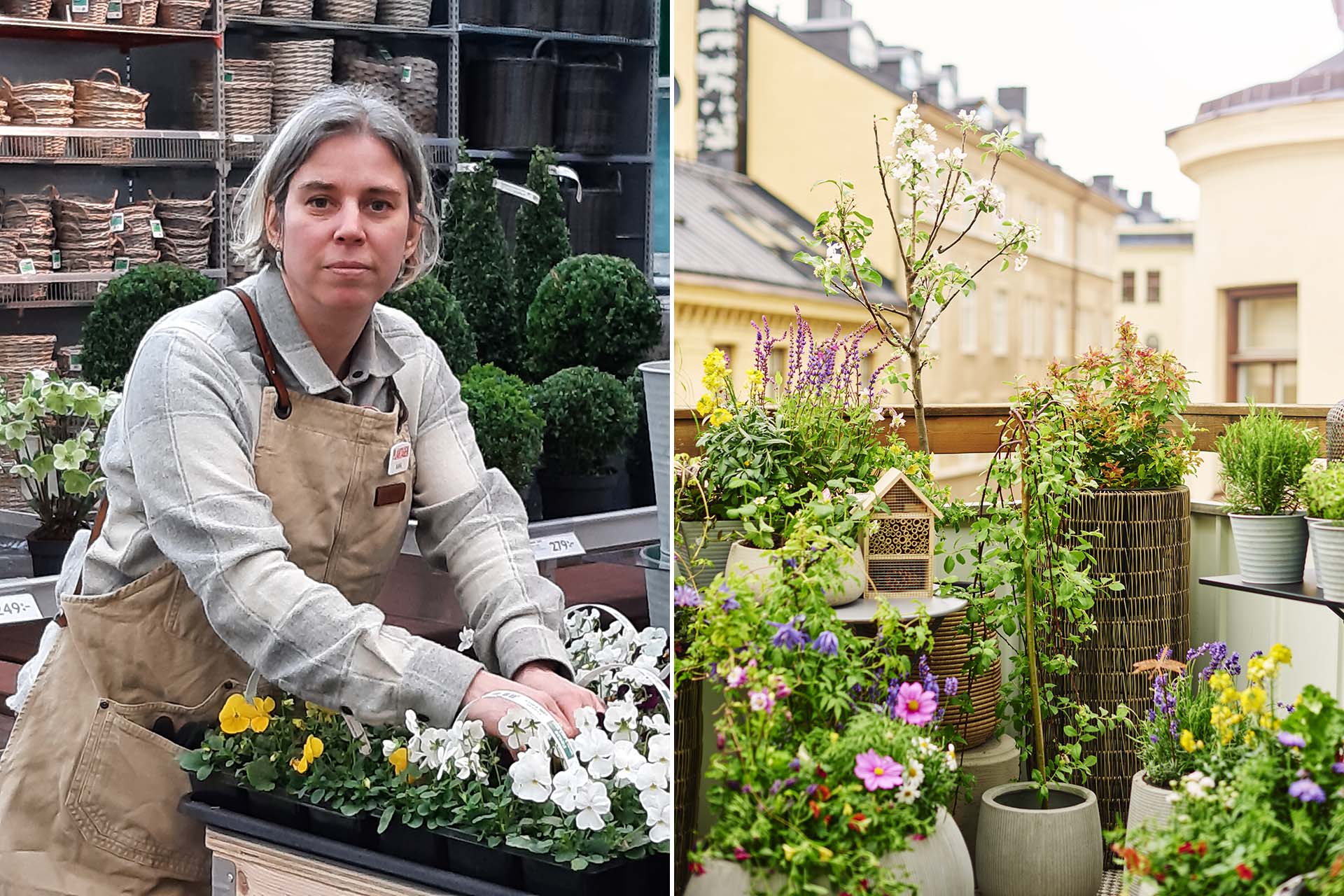
Images: Plantagen
Do you feel like gardening, but don’t have a balcony?
Relax! There are many crops that thrive on the windowsill. Some spices and herbs love the indoors, such as the basil family. Thai, lime and lemon basil all fit on the windowsill. Potted tomatoes and mini cucumbers are also popular to grow indoors. They get the best taste if they get tons of sunshine.
Then there is a wide range of sprouts that you can grow indoors all year round. I think pea shoots, beetroot sprouts and regular cress are wonderful on a sandwich, and they provide a vitamin injection that may be needed especially during the winter, says Anna.
